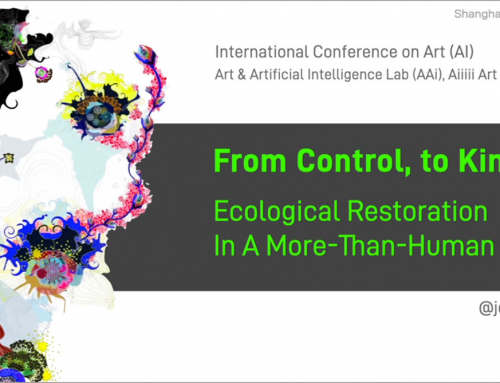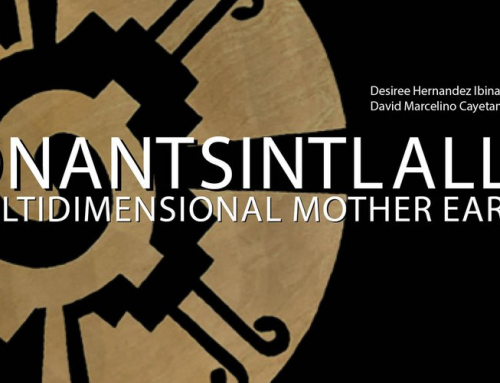(Summer re-run: first published July 2009)
This scary hand smashing through the wall to get you is the logo of last month’s Insead conference on social entrepreneurship. Its slogan was “Reaching For Impact”.
I’ve written critically here before about the assumptions that underly “design for development” – so I won’t repeat the whole argument.
And as I said here we are all emerging economies now.
So let’s just say that I’m troubled about the term “design for social impact” when the desired impact is on someone else’s turf, not on the designer’s own.
The language of Nesta’s new “Re-boot Britain” programme also strikes me as off-key. A complex society in transition is not best imagined as a faulty machine.
But both social impact, and rebooting, are thin-blooded when compared to the concept of “philanthrocapitalism” that’s celebrated in a new book.
It chronicles a new generation of “social investors” that is using big-business-style strategies and “expects results and accountability to match”. The philanthrocapitalists, a web of wealthy, motivated donors who have “set out to change the world” include Bill Gates, Bill Clinton, George Soros, Angelina Jolie, and Bono, among others.
The project of philanthrocapitalism is not incoherent, and the way they work is often transparent and well organized. The Gates Foundation, for example, seems to bevery professionally run. My doubts concern the assumptions that underly the philanthrocapitalists’ key aim, which is to provide capital to the large number of informal micro-enterprises that account for nearly half of GDP in low income countries (compared to just 13 percent in rich countries). The propositon is that low-income countries typically suffer from a “missing middle” in which “poor access to inputs” leaves “a massive economic gap in small and medium-sized enterprises.”
The “missing middle” is a real enough problem – but it won’t, for me, best be filled by the imposition of a capital-intensive and growth-oriented economy – the economy, in other words, that we have now.
A new publication from The Young Foundation in the UK, Social Venturing, describes a different kind of economy – a social economy – that is more socially and informationally intensive than capital intensive.
Social ventures have a huge gap to fill. In the UK – admittedly an extreme case – state spending on public services is likely to shrink by a staggering 20-40 percent in the coming years as the bill for the financial bailout comes due.
In the coming social economy, the role of national governments in countries like the UK will unavoidably change, and radically – away from the point-to-mass delivery of centrally-produced and paid-for services: hospital operations, kilowatts of electricity, or welfare payments to those qualifying for them.
For a whole range of problems, the Young Foundation authors argue, this mass delivery model is ill-suited. “It finds it difficult to deal adequately with difference and complexity, or with conditions or situations that are difficult to routinise”.
The study of living systems suggests models of how a social economy will work, they write. But a social economy will still depend on some technology. Distributed networks will be used intensively. Relationships will be sustained by the intensive use of broadband, mobile and other means of communication.
But a social economy will be radically less resource-intensive than the one we have now. There is an emphasis on collaboration and on repeated interactions, on care and maintenance – rather than one-off consumption, commodified transactions, or too much focus on fixed assets.
A key ingredient in a social economy is “relational capital”. This is both the knowledge and trust built up between a venture and its users and suppliers, and the relationships between a venture and its staff and circle of volunteers.
Conventional accounting takes little account of this intangible capital, yet in all social ventures it is the foundation of their strength and of their distinctiveness.
For social ventures, writes Robin Murray, “there is rarely a steady state, rather the shaping and reshaping of a cloud”.
I know from long experience that shaping clouds can be demanding, and is best not done alone. A key role in the social economy will therefore be played by new kinds of places, platforms and organisations that enable people to connect and coordinate with each other more easily and convivially than is possible now.
These places are already being prepared, as is shown by the enthralling growth of The Hub. This remarkable social enterprise – a global community of people from every profession, background and culture – is creating places on four continents that enable access to space, resources, connections, knowledge, experience and investment.
In addition to places and platforms like The Hub, time and trust are also core values of a social economy. Relational capital grows slowly. It takes time for people to know and trust each other. This process cannot be rushed.
The centrality of time in a social economy raises hard questions about philanthrocapitalism and its “big-business-style strategies”. Time is seldom allowed for, let alone paid for, in an efficiency-minded corporation. One has to question whether a rules-based approach to organisation, with its its “demand for results”, and accountability to the centre, is best-suited to social venturing.
As Robin Murray puts it, “The distributed systems of a social economy handle complexity not by standardisation and simplification imposed from the centre, but by distributing complexity to the margins – to households and service users and in the workplace to the local managers and workers.
“Those at the margins have what those at the centre can never have – a knowledge of detail, the specificity of time, of place, of particular events”.
All this is exciting stuff. But the social economy, as described in these publications, has one crucial limitation: it’s too human-centric.
A social economy, by definition, is an economy by and for human beings. It does not embrace the idea that looking after natural ecosystems, and the biosphere as a whole, needs to become the starting point, the raison d’etre, of sustainable economic activity.
With the coming of the social economy, many positive developments, that have been brewing for decades, begin to converge. But it is only half the story…
Danger and opportunity: crisis and the new social economy, by Robin Murray
Social venturing, by Robin Murray, Julie Caulier-Grice and Geoff Mulgan is published by The Young Foundation.





